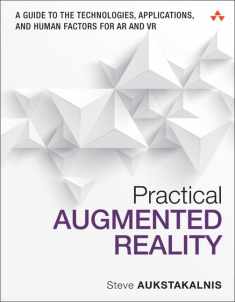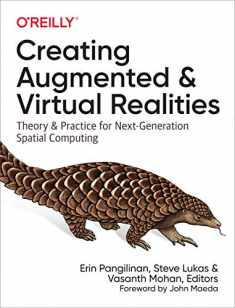
Augmented Reality: Principles and Practice (Usability)
Book details
Summary
Description
Today’s Comprehensive and Authoritative Guide to Augmented Reality
By overlaying computer-generated information on the real world, augmented reality (AR) amplifies human perception and cognition in remarkable ways. Working in this fast-growing field requires knowledge of multiple disciplines, including computer vision, computer graphics, and human-computer interaction. Augmented Reality: Principles and Practice integrates all this knowledge into a single-source reference, presenting today’s most significant work with scrupulous accuracy. Pioneering researchers Dieter Schmalstieg and Tobias Höllerer carefully balance principles and practice, illuminating AR from technical, methodological, and user perspectives.
Coverage includes
- Displays: head-mounted, handheld, projective, auditory, and haptic
- Tracking/sensing, including physical principles, sensor fusion, and real-time computer vision
- Calibration/registration, ensuring repeatable, accurate, coherent behavior
- Seamless blending of real and virtual objects
- Visualization to enhance intuitive understanding
- Interaction–from situated browsing to full 3D interaction
- Modeling new geometric content
- Authoring AR presentations and databases
- Architecting AR systems with real-time, multimedia, and distributed elements
This guide is indispensable for anyone interested in AR, including developers, engineers, students, instructors, researchers, and serious hobbyists.


We would LOVE it if you could help us and other readers by reviewing the book
Book review





